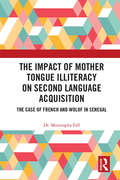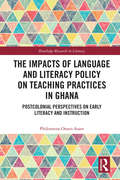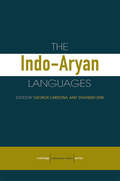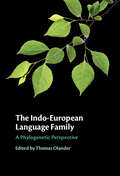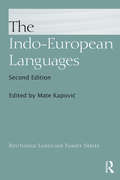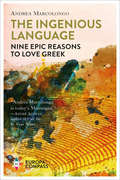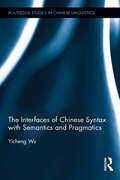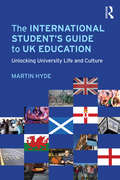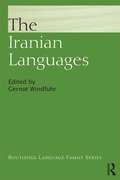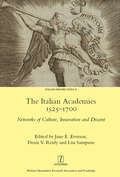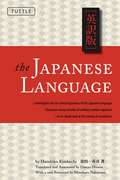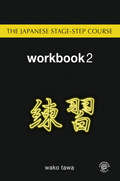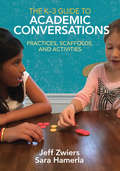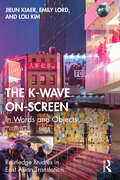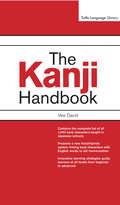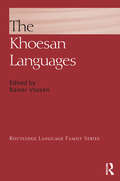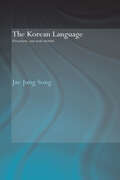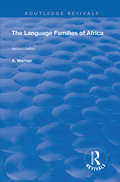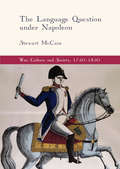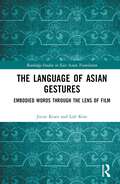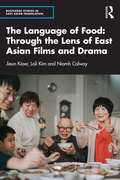- Table View
- List View
The Impact of Mother Tongue Illiteracy on Second Language Acquisition: The Case of French and Wolof in Senegal (Routledge Research in Language Education)
by Moustapha FallThis text illustrates the crucial role of the mother tongue literacy in second language acquisition by presenting findings from a comparative study conducted in primary schools in Senegal. In addition, the volume provides an in-depth look at the linguistic history of Senegal before, during, and after French colonialism. The Impact of Mother Tongue Illiteracy on Second Language Acquisition discusses the socio-linguistic landscape and ethnolinguistic composition of Senegal and its effect on the second language acquisition. An in-depth analysis of children’s phonological awareness, decoding, and reading comprehension in French reveals significant disparities in the literacy skills of Wolof children who have been exposed to Arabic and Qur’anic texts prior to schooling, and those who have not. In doing so, the text explores the impacts of post-colonial language policies in Africa, highlights the pedagogical consequences of mother tongue illiteracy, and questions the use of French as the only language of instruction in Senegalese schools. This detailed research text will of great interest and use to graduate and postgraduate students, researchers, academics, professionals and policy makers in the field of Second Language Acquisition, Multicultural Education, Applied Linguistics, French language education and, Language Policy and Planning.
The Impacts of Language and Literacy Policy on Teaching Practices in Ghana: Postcolonial Perspectives on Early Literacy and Instruction (Routledge Research in Literacy)
by Philomena Osseo-AsareThis text critically examines changes in Ghanaian language and literacy policy following independence in 1957 to consider its impacts on early literacy teaching. By adopting a postcolonial theoretical perspective, the text interrogates the logic behind policy changes which have prioritised English, local language, or biliteracy. It draws on data from interviews with teachers and researcher observation to demonstrate how policies have influenced teaching and learning. Dr Osseo-Asare’s findings inform the development of a conceptual framework which highlights the socio-cultural factors that impact the literacy and biliteracy of young children in Ghana, offering solutions to help teachers combat the challenges of frequent policy changes. This timely monograph will prove to be an essential resource not only for researchers working on education policies, teacher education, and English-language learning in postcolonial Ghana but also for those looking to identify the thematic and methodological nuances of studying literacy and education in postcolonial contexts.
The Indo-Aryan Languages (Routledge Language Family Ser.)
by Danesh Jain George CardonaThe Indo-Aryan languages are spoken by at least 700 million people throughout India, Pakistan, Bangladesh, Nepal, Sri Lanka and the Maldive Islands. They have a claim to great antiquity, with the earliest Vedic Sanskrit texts dating to the end of the second millennium B.C. With texts in Old Indo-Aryan, Middle Indo-Aryan and Modern Indo-Aryan, this language family supplies a historical documentation of language change over a longer period than any other subgroup of Indo-European. This volume is divided into two main sections dealing with general matters and individual languages. Each chapter on the individual language covers the phonology and grammar (morphology and syntax) of the language and its writing system, and gives the historical background and information concerning the geography of the language and the number of its speakers.
The Indo-European Controversy
by Martin W. Lewis Asya Pereltsvaig Pereltsvaig, Asya and Lewis, Martin W.Over the past decade, a group of prolific and innovative evolutionary biologists has sought to reinvent historical linguistics through the use of phylogenetic and phylogeographical analysis, treating cognates like genes and conceptualizing the spread of languages in terms of the diffusion of viruses. Using these techniques, researchers claim to have located the origin of the Indo-European language family in Neolithic Anatolia, challenging the near-consensus view that it emerged in the grasslands north of the Black Sea thousands of years later. But despite its widespread celebration in the global media, this new approach fails to withstand scrutiny. As languages do not evolve like biological species and do not spread like viruses, the model produces incoherent results, contradicted by the empirical record at every turn. This book asserts that the origin and spread of languages must be examined primarily through the time-tested techniques of linguistic analysis, rather than those of evolutionary biology.
The Indo-European Language Family: A Phylogenetic Perspective
by Thomas OlanderModern languages like English, Spanish, Russian and Hindi as well as ancient languages like Greek, Latin and Sanskrit all belong to the Indo-European language family, which means that they all descend from a common ancestor. But how, more precisely, are the Indo-European languages related to each other? This book brings together pioneering research from a team of international scholars to address this fundamental question. It provides an introduction to linguistic subgrouping as well as offering comprehensive, systematic and up-to-date analyses of the ten main branches of the Indo-European language family: Anatolian, Tocharian, Italic, Celtic, Germanic, Greek, Armenian, Albanian, Indo-Iranian and Balto-Slavic. By highlighting that these branches are saliently different from each other, yet at the same time display striking similarities, the book demonstrates the early diversification of the Indo-European language family, spoken today by half the world's population. This title is also available as open access on Cambridge Core.
The Indo-European Languages
by Anna Giacalone Ramat Paolo Ramat Mate Kapovi 263The Indo-European Languages presents a comprehensive survey of the individual languages and language subgroups within this language family. With over four hundred languages and dialects and almost three billion native speakers, the Indo-European language family is the largest of the recognized language groups and includes most of the major current languages of Europe, the Iranian plateau and the Indian subcontinent. Written by an international team of experts, this comprehensive, single-volume tome presents in-depth discussions of the historical development and specialized linguistic features of the Indo-European languages. This unique resource remains the ideal reference for advanced undergraduate and postgraduate students of Indo-European linguistics and languages, but also for more experienced researchers looking for an up-to-date survey of separate Indo-European branches. It will be of interest to researchers and anyone with an interest in historical linguistics, linguistic anthropology and language development.
The Ingenious Language: Nine Epic Reasons to Love Greek
by Andrea MarcolongoAn Italian journalist pleads her case for learning ancient Greek in modern times. For word nerds, language loons, and grammar geeks, an impassioned and informative literary leap into the wonders of the Greek language. Here are nine ways Greek can transform your relationship to time and to those around you, nine reflections on the language of Sappho, Plato, and Thucydides, and its relevance to our lives today, nine chapters that will leave readers with a new passion for a very old language, nine epic reasons to love Greek.The Ingenious Language is a love song dedicated to the language of history&’s greatest poets, philosophers, adventurers, lovers, adulterers, and generals. Greek, as Marcolongo explains in her buoyant and entertaining prose, is unsurpassed in its beauty and expressivity, but it can also offer us new ways of seeing the world and our place in it. She takes readers on an astonishing journey, at the end of which, while it may still be Greek to you, you&’ll have nine reasons to be glad it is. No batteries or prior knowledge of Greek required!Praise for The Ingenious Language&“Andrea Marcolongo is today&’s Montaigne. She possesses an amazing familiarity with the classics combined with the ease and lightness of those who surf the web.&” —André Aciman, New York Times–bestselling author of Find Me&“[Marcolongo&’s] declaration of love for Ancient Greek does more than celebrate the virtues of its grammar, it shows us modern fools how this language can help us understand ourselves better and live a better life.&” —Le Monde (France)
The Interfaces of Chinese Syntax with Semantics and Pragmatics (Routledge Studies in Chinese Linguistics)
by Yicheng WuThe Interfaces of Chinese Syntax with Semantics and Pragmatics provides an in-depth exploration of a variety of interface phenomena in Chinese, a non-inflectional language, where to a large extent word order constrains its interpretation and defines its grammatical functions. Under the Dynamic Syntax approach, which takes the incremental left-to-right processing of linguistic forms to be a fundamental part of characterizing the relation between syntactic structure and semantic interpretation, a straightforward explanation is provided. The study features detailed analysis of a range of key grammatical constructions such as topic, passive, copular and cleft, where previous analyses were sought in pure syntactic, semantic or pragmatic terms. Clear and straightforward throughout, The Interfaces of Chinese Syntax with Semantics and Pragmatics will be of interest to graduate students and scholars of Chinese, linguistics and cognitive science.
The International Student's Guide to UK Education: Unlocking University Life and Culture
by Martin HydeAre you thinking of studying at university in Britain? Do you feel confused about which course is best for you, which university to choose, and how to apply? Are you wondering about what kinds of challenges you will be faced with, how best to approach them and how to overcome them? If so, this guidebook is for you. Honest and accurate, this book acts as an international student introduction and cultural guide to UK Higher Education. It informs and guides students in their preparation for all aspects of UK HE, from university selection and application through to participation, and provides a clear understanding of how British universities function. Helping international students make the most of the many opportunities that university offers, this text will expand your knowledge of UK Higher Education with regards to: Application procedures Finances Self-awareness, cultural understanding and adaptation (social and academic) University administrative procedures, facilities and support Work and career information and advice. The International Student’s Guide to UK Education is a comprehensive guide that will help students to develop critical and reflective ability in order to become independent, well-informed and empowered decision makers.
The Iranian Languages (Routledge Language Family Series)
by Gernot WindfuhrThe Iranian languages form the major eastern branch of the Indo-European group of languages, itself part of the larger Indo-Iranian family. Estimated to have between 150 and 200 million native speakers, the Iranian languages constitute one of the world’s major language families. This comprehensive volume offers a detailed overview of the principle languages which make up this group: Old Iranian, Middle Iranian, and New Iranian. The Iranian Languages is divided into fifteen chapters. The introductory chapters by the editor present a general overview and a detailed discussion of the linguistic typology of Iranian. The individual chapters which follow are written by leading experts in the field. These provide the reader with concise, non-technical descriptions of a range of Iranian languages. Each chapter follows the same pattern and sequence of topics, taking the reader through the significant features not only of phonology and morphology but also of syntax; from phrase level to complex sentences and pragmatics. Ample examples on all levels are provided with detailed annotation for the non-specialist reader. In addition, each chapter covers lexis, sociolinguistic and typological issues, and concludes with annotated sample texts. This unique resource is the ideal companion for undergraduate and postgraduate students of linguistics and language. It will also be of interest to researchers or anyone with an interest in historical linguistics, linguistics anthropology and language development. Gernot Windfuhr is Professor of Iranian Studies at the University of Michigan; he has published widely on Persian and Iranian languages and linguistics and related languages, as well as on other aspects of Iranian culture including Persian literature and Pre-Islamic Iranian religions.
The Italian Academies 1525-1700: Networks of Culture, Innovation and Dissent (Legenda)
by Jane E. Everson Denis V Reidy Lisa SampsonThe intellectual societies known as Academies played a vital role in the development of culture, and scholarly debate throughout Italy between 1525-1700. They were fundamental in establishing the intellectual networks later defined as the ‘République des Lettres’, and in the dissemination of ideas in early modern Europe, through print, manuscript, oral debate and performance. This volume surveys the social and cultural role of Academies, challenging received ideas and incorporating recent archival findings on individuals, networks and texts. Ranging over Academies in both major and smaller or peripheral centres, these collected studies explore the interrelationships of Academies with other cultural forums. Individual essays examine the fluid nature of academies and their changing relationships to the political authorities; their role in the promotion of literature, the visual arts and theatre; and the diverse membership recorded for many academies, which included scientists, writers, printers, artists, political and religious thinkers, and, unusually, a number of talented women. Contributions by established international scholars together with studies by younger scholars active in this developing field of research map out new perspectives on the dynamic place of the Academies in early modern Italy. The publication results from the research collaboration ‘The Italian Academies 1525-1700: the first intellectual networks of early modern Europe’ funded by the Arts and Humanities Research Council and is edited by the senior investigators.
The Japanese Language
by Mineharu Nakayama Umeyo Hirano Haruhiko KindaichiThis is a book about the structure, history and evolution of the Japanese languageThe Japanese Language is a classic study of one of the world's most widely used but least understood languages. Emphasizing the richness and complexity of Japanese as well as its limitations, this fine book provides a lively discussion about the uniqueness of the Japanese language.This book will interest anyone intrigued by one of the word's most widely used and least understood languages. The relationship of Japanese to other languages is not well understood even by native speakers, and Proffessor Kindaichi sets out to define it. He concludes that Japanese is indeed only remotely related to other world languages although it shares many features in common with the languages of mainland AsiaReaders who are just beginning Japanese study will find this section especially fascinating, for each point is backed by examples from literature and everyday speech. Kindaichi also investigates the so-called vagueness of Japanese and traces it to its source-the unusual sentence order. This book includes:The highly debated origins of the Japanese languageDialects, jargon, sex- and role-based distinctionsDifferences between informal, formal, and literary langaugeStructure, rhythm, and accent of pronunciationWhat can and cannot be said in Japanese
The Japanese Language
by Mineharu Nakayama Umeyo Hirano Haruhiko KindaichiThis is a book about the structure, history and evolution of the Japanese languageThe Japanese Language is a classic study of one of the world's most widely used but least understood languages. Emphasizing the richness and complexity of Japanese as well as its limitations, this fine book provides a lively discussion about the uniqueness of the Japanese language.This book will interest anyone intrigued by one of the word's most widely used and least understood languages. The relationship of Japanese to other languages is not well understood even by native speakers, and Proffessor Kindaichi sets out to define it. He concludes that Japanese is indeed only remotely related to other world languages although it shares many features in common with the languages of mainland AsiaReaders who are just beginning Japanese study will find this section especially fascinating, for each point is backed by examples from literature and everyday speech. Kindaichi also investigates the so-called vagueness of Japanese and traces it to its source-the unusual sentence order. This book includes:The highly debated origins of the Japanese languageDialects, jargon, sex- and role-based distinctionsDifferences between informal, formal, and literary langaugeStructure, rhythm, and accent of pronunciationWhat can and cannot be said in Japanese
The Japanese Stage-Step Course: Workbook 2
by Wako TawaWorkbook 2 of the Japanese Stage-Step Course is designed to be used alongside Stages Two and Three of the Grammar Textbook. It contains conversation, listening, reading and writing exercises along with new vocabulary for each lesson in the textbook to enable students to thoroughly practice the grammatical structures they have learnt. Additional features include: detailed explanation of vocabulary items abundant exercises including sentence as well as discourse practices extensive cross-referencing with the Grammar Textbook Japanese–English and English–Japanese glossary. All the audio material for Workbook 2 is available on CD2.
The K-3 Guide to Academic Conversations: Practices, Scaffolds, and Activities
by Jeff Zwiers Sara R. Hamerla“For thousands of years people have been using the skills we describe in this book to engage in conversations with others. What isn’t as prevalent, however, is instruction--especially in primary grades—in which we engage students in productive conversations about academic ideas. This book fills that very big need.” --Jeff Zwiers & Sara Hamerla Talk about content mastery . . . Primary teachers, you won’t want to miss this: if you’re looking for a single resource to foster purposeful content discussions and high-quality interpersonal engagement, then put Jeff Zwiers and Sara Hamerla’s K-3 Guide to Academic Conversations at the top of your reading list. Whether your students love to talk or not, all must be equipped with key conversation skills such as active listening, taking turns, posing, clarifying, supporting with examples, and arguing ideas. This ready resource comes packed with every imaginable tool you could need to make academic conversations part of your everyday teaching: Sample lesson plans and anchor charts Guidelines for creating effective prompts Applications across content areas, with corresponding assessments Rubrics and protocols for listening to student speech Transcripts of conversations and questions for reflection Companion website with video and downloadable resources Tens of thousands of students in the upper grades have reaped the benefits of academic conversations: high-quality face-to-face interactions, increased motivation, stronger collaborative argumentation skills, and better understanding and retention of content. The K-3 Guide to Academic Conversations is that resource for providing your primary students with the same powerful learning opportunities.
The K-3 Guide to Academic Conversations: Practices, Scaffolds, and Activities
by Jeff Zwiers Sara R. Hamerla“For thousands of years people have been using the skills we describe in this book to engage in conversations with others. What isn’t as prevalent, however, is instruction--especially in primary grades—in which we engage students in productive conversations about academic ideas. This book fills that very big need.” --Jeff Zwiers & Sara Hamerla Talk about content mastery . . . Primary teachers, you won’t want to miss this: if you’re looking for a single resource to foster purposeful content discussions and high-quality interpersonal engagement, then put Jeff Zwiers and Sara Hamerla’s K-3 Guide to Academic Conversations at the top of your reading list. Whether your students love to talk or not, all must be equipped with key conversation skills such as active listening, taking turns, posing, clarifying, supporting with examples, and arguing ideas. This ready resource comes packed with every imaginable tool you could need to make academic conversations part of your everyday teaching: Sample lesson plans and anchor charts Guidelines for creating effective prompts Applications across content areas, with corresponding assessments Rubrics and protocols for listening to student speech Transcripts of conversations and questions for reflection Companion website with video and downloadable resources Tens of thousands of students in the upper grades have reaped the benefits of academic conversations: high-quality face-to-face interactions, increased motivation, stronger collaborative argumentation skills, and better understanding and retention of content. The K-3 Guide to Academic Conversations is that resource for providing your primary students with the same powerful learning opportunities.
The K-Wave On-Screen: In Words and Objects (Routledge Studies in East Asian Translation)
by Jieun Kiaer Loli Kim Emily LordThe K-Wave On-Screen provides an engaging and accessible exploration of the meaning of ‘K-’ through the lens of words and objects in K-dramas and K-films. Once a small subculture known only to South Korea’s East Asian neighbours, the Korean Wave has exploded in popularity around the globe in the last decade. Its success has been fuelled by social media and the advanced technological capabilities of South Korea. With #KpopTwitter having amassed 7.8 billion tweets and with K-films receiving acclaim from major award ceremonies, the K-wave is now a global cultural phenomenon. This book touches on globally popular productions, such as Parasite (2019), Squid Game (2021), Pachinko (2022), SKY Castle (2018), and Kim Ji-young: Born 1982 (2019) to highlight that K- has departed from the traditional meaning of ‘Korean-ness’ to become a new, globally-informed, and hybrid entity. This book will be of interest to students in East Asian studies, and those engaged with Korean language learning. The book will also appeal to those interested in Korean culture and media.
The Kanji Handbook
by Vee DavidThe Kanji Handbook is a revolutionary new learning technique for students of the Japanese language. This innovative book presents the concept and application of "KanjiHybrids", a teaching tool created by the author to help non-Japanese speakers learn Kanji. Simply put, Vee David has linked the 1,945 most commonly used Kanji characters with English words to form one integral unit, a "Kanji Hybrid". Using mnemonics as a learning tool, the author has replaced the first letter of an English word with the Kanji for that word in an effort to help students memorize difficult Kanji characters.Employing learning strategies that will aid students from beginning to advanced levels, The Kanji Handbook is an exciting new entry into the difficult world of Japanese language learning.
The Kanji Handbook
by Vee DavidThe Kanji Handbook is a revolutionary new learning technique for students of the Japanese language. This innovative book presents the concept and application of "KanjiHybrids", a teaching tool created by the author to help non-Japanese speakers learn Kanji. Simply put, Vee David has linked the 1,945 most commonly used Kanji characters with English words to form one integral unit, a "Kanji Hybrid". Using mnemonics as a learning tool, the author has replaced the first letter of an English word with the Kanji for that word in an effort to help students memorize difficult Kanji characters.Employing learning strategies that will aid students from beginning to advanced levels, The Kanji Handbook is an exciting new entry into the difficult world of Japanese language learning.
The Khoesan Languages (Routledge Language Family Series)
by Rainer VossenThe Routledge Language Family series is aimed at undergraduates and postgraduates of linguistics and language, and those with an interest in historical linguistics, linguistic anthropology and language development. According to a widely accepted hypothesis, the Khoesan languages represent the smallest of the four language phyla in Africa, geographically distributed mainly in Botswana and Namibia. Today, only 30 or so Khoesan languages may still exist, with about 300,000 native speakers. In other words, most Khoesan languages were already extinct before a sound scholarly interest in them could begin to develop. Drawing together a distinguished group of international experts, with much of the material taken from data collected by the authors’ own field work, this volume presents descriptive, typological, historical-comparative and sociolinguistic material on Khoesan. The Khoesan Languages contains eight sections: an introduction, an overview of genetic relationships, a typological survey and profile of Khoesan, four chapters covering core linguistic areas of Khoesan phonetics and phonology, tonology, morphology and syntax, and a final chapter tackling major issues in Khoesan sociolinguistics, as well as discussions of language contact. Comprehensive and scholarly, yet also lucid in its coverage of a broad range of languages, dialects and sub-groups, this unprecedented and original work represents the current state of Khoesan linguistics.
The Korean Language: Structure, Use and Context
by Jae Jung SongSuitable for students of all levels, this book provides a general description of the Korean language by highlighting important structural aspects whilst keeping technical details to a minimum. By examining the Korean language in its geographical, historical, social and cultural context the reader is able to gain a good understanding of its speakers and the environment in which it is used. The book covers a range of topics on Korean including its genetic affiliation, historical development, sound patterns, writing systems, vocabulary, grammar and discourse. The text is designed to be accessible, primarily to English-speaking learners of Korean and scholars working in disciplines other than linguistics, as well as serving as a useful introduction for general linguists. The book complements Korean language textbooks used in the classroom and will be welcomed not only by readers with a wider interest in Korean studies, but also by Asian specialists in general.
The Language Families Of Africa: Second edition (Routledge Revivals)
by A WernerPublished in 1925, this introduction provides an accessible account of language families in Africa. Covering the five families of African languages: the Sudan family, the Bantu family, the Hamitic family, the Bushman family and the Semitic family, it provides a detailed study of the languages, phonetics and linguistic content. The book will be of use to anyone interested in the history and development of human speech.
The Language Question under Napoleon
by Stewart McCainThis book offers a new perspective on the cultural politics of the Napoleonic Empire by exploring the issue of language within four pivotal institutions - the school, the army, the courtroom and the church. Based on wide-ranging research in archival and published sources, Stewart McCain demonstrates that the Napoleonic State was in reality fractured by disagreements over how best to govern a population characterized by enormous linguistic diversity. Napoleonic officials were not simply cultural imperialists; many acted as culture-brokers, emphasizing their familiarity with the local language to secure employment with the state, and pointing to linguistic and cultural particularism to justify departures from which what others might have considered desirable practice by the regime. This book will be of interest to scholars of the Napoleonic Empire, and of European state-building and nationalisms.
The Language of Asian Gestures: Embodied Words Through the Lens of Film (Routledge Studies in East Asian Translation)
by Jieun Kiaer Loli KimThe Language of Asian Gestures explores Asian gestures as a non-verbal language within the context of films and dramas.This book provides a cross-cultural Asian perspective on a range of important common gestures and their meanings, covering a range of Asian regions including Korea, China, Hong Kong, Japan, Taiwan, Vietnam, Singapore, Thailand, Indonesia, the Philippines, India, and Pakistan. While most studies focus on text-based communication, gestures find themselves overshadowed by text and speech. Asian gestures, too, often reside in the shadow of Eurocentric viewpoints. This book will shift this dynamic and amplify the voices that have typically been marginalised within 20th-century Eurocentric discussions.The book will be informative for students and researchers interested in Asian languages, cultures, film studies, and pragmatics. It bridges the gap between words and gestures, unveiling a world of concealed meanings and enriching our understanding of diverse forms of expression.
The Language of Food: Through the Lens of East Asian Films and Drama (Routledge Studies in East Asian Translation)
by Jieun Kiaer Loli Kim Niamh CalwayThe Language of Food: Through the Lens of East Asian Films and Drama invites readers into the fascinating world where food culture and language intersect, revealing how each dish communicates beyond mere taste.Through East Asian films and television shows, this book uncovers the rich tapestry of 'food languages' embedded within East Asian cultures. Divided into three parts – Base, Ingredients, and Seasoning – this book provides a structured exploration of this phenomenon. The Base section offers philosophical and historical context, while the Ingredients section delves deeper into specific themes, using examples from film and television drama to illustrate the nuanced communication inherent in food culture. Finally, the book is 'seasoned' with linguistic insights and a practical food words glossary, aiding readers in navigating the intricate verbal and cultural nuances at play. This illuminating resource goes beyond the realm of food itself, offering a profound understanding of how each dish carries its language, enriching communication and deepening cultural connections.This book will captivate students and researchers of East Asian languages, media studies, film studies, food studies, and Korean Wave studies and anyone intrigued by the intricate relationship between food and language.
